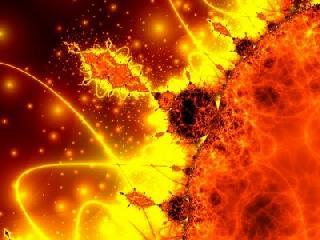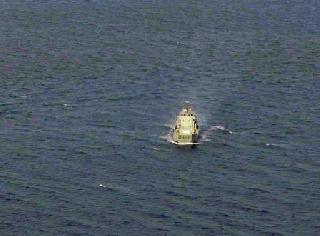
WASHINGTON (PTI): Scientists have claimed to have developed a system which can warn astronauts and air crew about radiation from solar storms nearly three hours in advance, giving them enough time to take protective action.
"If you're in a plane flying over the poles, there is an increased radiation exposure comparable to having an extra chest X-ray you weren't planning on," says John Bieber, professor of physics and astronomy at the University of Delaware Bartol Research Institute.
"However, if you're an astronaut on the way to the Moon or Mars, it's a big problem. It could kill you," adds Bieber, who supervised the project led by Su Yeon Oh, post-doctoral researcher at Chungnam National University, South Korea.
The sun is now moving into a peak period of solar storm activity, which generally occurs every 11 years. The solar storms, flares and coronal mass ejections threaten the electrical system on the Earth in addition to some astronauts and fliers, said a University of Delaware study.
"Travelling nearly at the speed of light, it takes just 10 minutes for the first particles ejected from a solar storm to reach the Earth," Bieber said.
These sun storms can cover thousands of miles on the sun, like a wave of exploding hydrogen bombs.
The finding comes as a big relief to astronauts and air crews flying over Earth's Polar Regions, according to a University statement.
The researchers used data collected by two neutron monitors installed years ago at the South Pole by Delaware - one inside and one outside the Amundsen-Scott South Pole Station - to determine the intensity of the high-energy, fast-moving particles that arrive to the Earth first from solar storms, the statement said.
These particles can carry energies over 500 megaelectron volts (MeV) - that's over 500 million electron volts. By examining the properties of these first-arriving particles, the scientists can make useful predictions about the slower-moving, yet more dangerous particles to follow.
The authors compared their predictions for 12 solar events against observations made by geosynchronous satellites, achieving good agreement for protons with energies higher than 40 to 80 mega-electron (million) volts.
 Next Article
Next Article











The Indian Air Force, in its flight trials evaluation report submitted before the Defence Ministry l..
view articleAn insight into the Medium Multi-Role Combat Aircraft competition...
view articleSky enthusiasts can now spot the International Space Station (ISS) commanded by Indian-American astr..
view article